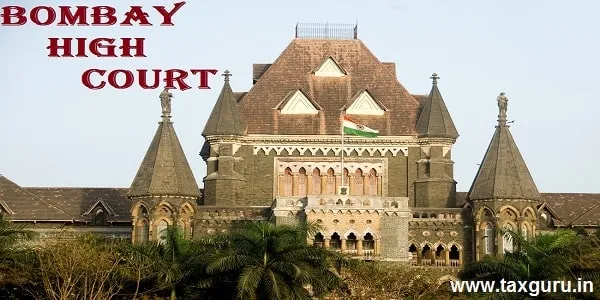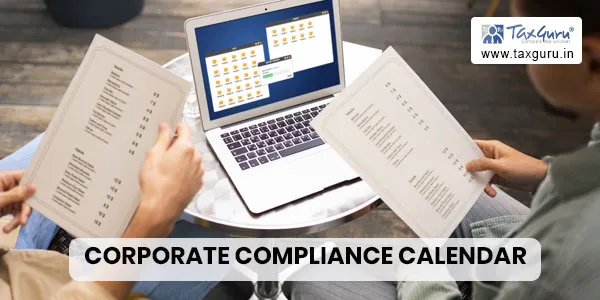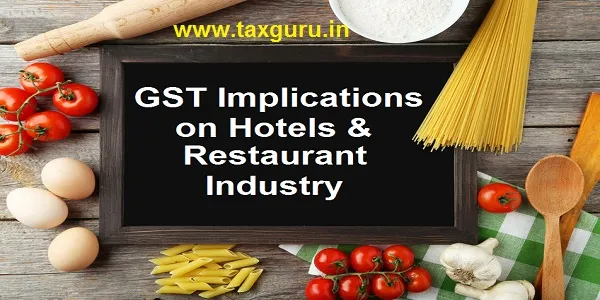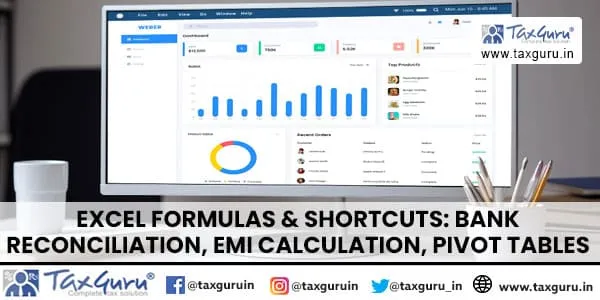Via Press Release dated 03rdJuly, 2019 certain further clarifications have been issued pertaining to the Annual Return and the Reconciliation Statement. Said clarifications along with our comments in brief are given hereinafter:
a) Payment of any unpaid tax: Section 73 of the CGST Act provides a unique opportunity of self – correction to all taxpayers i.e. if a taxpayer has not paid, short paid or has erroneously obtained/been granted refund or has wrongly availed or utilized input tax credit then before the service of a notice by any tax authority, the taxpayer may pay the amount of tax with interest. In such cases, no penalty shall be leviable on such tax payer. Therefore, in cases where some information has not been furnished in the statement of outward supplies in FORM GSTR-1 or in the regular returns in FORM GSTR-3B, such taxpayers may pay the tax with interest through FORM GST DRC-03 at any time. In fact, the annual return provides an additional opportunity for such taxpayers to declare the summary of supply against which payment of tax is made.
Our comments
Even though the clarification is in line with the earlier updates, the same however fails to clarify as to why such payment has to be done only by debit to the electronic cash ledger whereas law permits making such payment even through electronic credit ledger. Perhaps the clarification can be read so as to allow making such payment through a normal DRC – 03 (if credit is to be utilized) and not through DRC – 03 meant for annual return.
b) Primary data source for declaration in annual return: Time and again taxpayers have been requesting as to what should be the primary source of data for filing of the annual return and the reconciliation statement. There has been some confusion over using FORM GSTR-1, FORM GSTR3B or books of accounts as the primary source of information. It is important to note that both FORM GSTR-1 and FORM GSTR-3B serve different purposes. While, FORM GSTR-1 is an account of details of outward supplies, FORM GSTR-3B is where the summaries of all transactions are declared and payments are made. Ideally, information in FORM GSTR-1, FORM GSTR-3B and books of accounts should be synchronous and the values should match across different forms and the books of accounts. If the same does not match, there can be broadly two scenarios, either tax was not paid to the Government or tax was paid in excess. In the first case, the same shall be declared in the annual return and tax should be paid and in the latter all information may be declared in the annual return and refund (if eligible) may be applied through FORM GST RFD-01A. Further, no input tax credit can be reversed or availed through the annual return. If taxpayers find themselves liable for reversing any input tax credit, they may do the same through FORM GST DRC-03 separately.
Our comments
Essentially the clarification provides that the data in the Annual Return shall be based on the books and refund may be applied if some excess tax has been paid. It also provides that ITC liable to be reversed but not reversed till date can be paid through DRC – 03. The above clarification however does not consider Circular No. 26/26/2017 dt. 29thDecember, 2017 which permitted the adjustment of any erroneous reporting as well as payment in the subsequent period GSTR – 3B. Said Circular (nor law) does not provide for any time limit for making such corrections in the context of GSTR – 3B. Hence the route to seek an adjustment rather than refund should have been kept open in line with the referred circular.
c) Premise of Table 8D of Annual Return:There appears to be some confusion regarding declaration of input tax credit in Table 8 of the annual return. The input tax credit which is declared / computed in Table 8D is basically credit that was available to a taxpayer in his FORM GSTR-2A but was not availed by him between July 2017 to March 2019. The deadline has already passed and the taxpayer cannot avail such credit now. There is no question of lapsing of any such credit, since this credit never entered the electronic credit ledger of any taxpayer. Therefore, taxpayers need not be concerned about the values reflected in this table. This is merely an information that the Government needs for settlement purposes. Figures in Table 8A of FORM GSTR-9 are auto-populated only for those FORM GSTR-1 which were furnished by the corresponding suppliers by the due date. Thus, ITC on supplies made during the financial year 2017-18, if reported beyond the said date by the corresponding supplier, will not get auto-populated in said Table 8A. It may also be noted that FORM GSTR-2A continues to be auto-populated on the basis of the corresponding FORM GSTR-1 furnished by suppliers even after the due date. In such cases there would be a mis-match between the updated FORM GSTR-2A and the auto-populated information in Table 8A. It is important to note that Table 8A of the annual returns is auto-populated from FORM GSTR-2A as on 1 May, 2019.
Our comments
A welcome clarification on the real purpose behind Table 8. It is merely for fund settlement and hence it can be deduced that ITC cannot be denied merely because the difference with GSTR – 2A is negative.
d) Premise of Table 8J of Annual Return:In the press release on annual return issued earlier on 4 June 2019, it has already been clarified that all credit of IGST paid at the time of imports between July 2017 to March 2019 may be declared in Table 6E. If the same is done properly by a taxpayer, then Table 8I and 8J shall contain information on credit which was available to the taxpayer and the taxpayer chose not to avail the same. The deadline has already passed and the taxpayer cannot avail such credit now. There is no question of lapsing of any such credit, since this credit never entered the electronic credit ledger of any taxpayer. Therefore, taxpayers need not be concerned about the values reflected in this table. This is information that the Government needs for settlement purposes.
Our comments
Similar to the above clarification at (c), the reporting of the difference between ITC available on imports and claimed is merely for fund settlement. Earlier clarification had also addressed the issue of imports made in the month of March and thus IGST has also been paid in the same month but ITC is claimed in April since the goods have been received only in the month of April.
e) Difficulty in reporting of information not reported in regular returns:There have been a number of representations regarding non-availability of information in Table 16A or 18 of Annual return in FORM GSTR-9. It has been observed that smaller taxpayers are facing a lot of challenge in reporting information that was not being explicitly reported in their regular statement/returns (FORM GSTR-1 and FORM GSTR-3B). Therefore, taxpayers are advised to declare all such data / details (which are not part of their regular statement/returns) to the best of their knowledge and records. This data is only for information purposes and reasonable/explainable variations in the information reported in these tables will not be viewed adversely.
Our comments
The clarification provides that details in Table 16A (supplies received from composition taxpayers) or 18 (HSN summary of inward supplies independently being 10% or more of total value of inward supplies) must be filled by the suppliers to the best of their knowledge and records. It also provides that said data is only meant for information purposes and reasonable/explainable variations in the information reported in these tables will not be viewed adversely. Our concerns stems from the fact that if the variations were explainable the supplier would have filled correct figures. Hence adversely viewing the said data if the variations are not reasonable/explainable may not bring much respite to the tax payers. It is thus advisable that the said details may be filled only after determining the accuracy of the data.
f) Information in Table 5D (Exempted), Table 5E (Nil Rated) and Table 5F (Non-GST Supply):It has been represented by various trade bodies/associations that there appears to be some confusion over what values are to be entered in Table 5D,5E and 5F of FORM GSTR-9. Since, there is some overlap between supplies that are classifiable as exempted and nil rated and since there is no tax payable on such supplies, if there is a reasonable/explainable overlap of information reported across these tables, such overlap will not be viewed adversely. The other concern raised by taxpayers is the inclusion of no supply in the category of Non-GST supplies in Table 5F. For the purposes of reporting, non-GST supplies includes supply of alcoholic liquor for human consumption, motor spirit (commonly known as petrol), high speed diesel, aviation turbine fuel, petroleum crude and natural gas and transactions specified in Schedule III of the CGST Act.
Our comments
It is again a welcome clarification which provides that, the given the overlapping in the reporting of categories (Nil, Exempted and Non-GST Supply), the figures reported in the said categories will not be viewed adversely. It may however be noted that reporting the figures in the said categories may trigger the requirement of ITC reversal u/s 17(2) of the CGST Act, 2017.
g) Reverse charge in respect of Financial Year 2017-18 paid during Financial Year 2018- 19:Many taxpayers have requested for clarification on the appropriate column or table in which tax which was to be paid on reverse charge basis for the FY 2017-18 but was paid during FY 2018-19. It may be noted that since the payment was made during FY 2018-19, the input tax credit on such payment of tax would have been availed in FY 2018-19 only. Therefore, such details will not be declared in the annual return for the FY 2017-18 and will be declared in the annual return for FY 2018- 19. If there are any variations in the calculation of turnover on account of this adjustment, the same may be reported with reasons in the reconciliation statement (FORM GSTR-9C).
Our comments
The above clarification seeks to provide that the tax paid under RCM for 2017-18 in 2018-19 need not be reported in the Annual Return of 17-18 but in 18-19. It further provides that the same may be reported in the reconciliation statement (GSTR – 9C) of 17-18. This is a dichotomy as reporting of said variation in GSTR – 9C of 17-18 but in Annual Return of 18-19 will entail again reporting of the said variation in GSTR – 9C of 18-19 when the figures reported therein are compared with the Annual Return of the same year. The clarification also does not address the issue in cases where the tax has not yet been paid under RCM for 17-18.
h) Role of chartered accountant or a cost accountant in certifying reconciliation statement:There are apprehensions that the chartered accountant or cost accountant may go beyond the books of account in their recommendations under FORM GSTR-9C. The GST Act is clear in this regard. With respect to the reconciliation statement, their role is limited to reconciling the values declared in annual return (FORM GSTR-9) with the audited annual accounts of the taxpayer
Our comments
Readers may peruse our analysis dated 21stDecember, 2018 wherein we have highlighted that the scope of 9C is never to travel beyond the books. But in the same breadth we are of the view that to the extent of transactions reported in the books, same have to be truthfully reported in GSTR – 9C and cannot be done mechanically. This is because the verification clause at the end of GSTR – 9C declares that the figures reported therein are “true and correct”.
i) Turnover for eligibility of filing of reconciliation statement:It may be noted that the aggregate turnover i.e. the turnover of all the registrations having the same Permanent Account Number is to be used for determining the requirement of filing of reconciliation statement. Therefore, if there are two registrations in two different States on the same PAN, say State A (with turnover of Rs. 1.2 Crore) and State B (with turnover of Rs. 1 Crore) they are both required to file reconciliation statements individually for their registrations since their aggregate turnover is greater than Rs. 2 Crore. The aggregate turnover for this purpose shall be reckoned for the period July, 2017 to March, 2018
Our comments
A U-turn by the policy makers. Earlier on the portal it was clarified that the turnover limit of Rs. 2 crore must be seen for the 12 months of 17-18 and not 9 months (when GST was applicable) although law permits to consider only 9 months turnover for the said limits. Now a correct interpretation has been given which provides that the said limit shall be reckoned only for 9 months.
j) Treatment of Credit Notes / Debit Notes issued during FY 2018-19 for FY 2017-18:It may be noted that no credit note which has a tax implication can be issued after the month of September 2018 for any supply pertaining to FY 2017-18; a financial/commercial credit note can, however, be issued. If the credit or debit note for any supply was issued and declared in returns of FY 2018-19 and the provision for the same has been made in the books of accounts for FY 2017-18, the same shall be declared in Pt. V of the annual return. Many taxpayers have also represented that there is no provision in Pt. II of the reconciliation statement for adjustment in turnover in lieu of debit notes issued during FY 2018-19 although provision for the same was made in the books of accounts for FY 2017-18. In such cases, they may adjust the same in Table 5O of the reconciliation statement in FORM GSTR-9C.
Our comments
The clarification states that if the credit or debit note for any supply was issued and declared in returns of FY 2018-19 and the provision for the same has been made in the books of accounts for FY 2017-18, the same shall be declared in Pt. V of the annual return. Hence it essentially provides that the disclosure in the Annual Return shall be as per the provisions made and not the actual date of issuance. One must refer to Sec. 34(2) of the CGST Act, 2017 which permits adjustment of tax liability only during the period when such credit note is issued and reported. Since the credit note in respect of the provisions made in books in 17-18 would have been issued and tax adjusted in 18-19, the same cannot be considered as part of 17-18. In fact the Annual Return (as per law as well as instruction no. 2) only permits reporting of details for the period between July 2017 to March 2018.
k) Duplication of information in Table 6B and 6H:Many taxpayers have represented about duplication of information in Table 6B and 6H of the annual return. It may be noted that the label in Table 6H clearly states that information declared in Table 6H is exclusive of Table 6B. Therefore, information of such input tax credit is to be declared in one of the rows only.
Our comments
Same is in line with the descriptions given for the said fields in Table 6.
l) Reconciliation of input tax credit availed on expenses:Table 14 of the reconciliation statement calls for reconciliation of input tax credit availed on expenses with input tax credit declared in the annual return. It may be noted that only those expenses are to be reconciled where input tax credit has been availed. Further, the list of expenses given in Table 14 is a representative list of heads under which input tax credit may have been availed. The taxpayer has the option to add any head of expenses.
Our comments
Clarification provides that only those expenses are to be reconciled where input tax credit has been availed. It however does not address the issue of reporting of the expenses pertaining to the first three months (forming part of the expense head wherein ITC would have been availed). It also does not address the issue of the amounts to be reported in column 3 (whether the tax amount which would have been expensed out due to it being ineligible to be reported separately) of the said Table dealing with amount of total ITC. More clarification on this would have been beneficial.
Conclusion
Above clarifications shall indeed enable filling of both the forms with lesser confusion (provided all the information are available). Said clarifications also end with the request to file Annual Return (FORM GSTR-9 / FORM GSTR-9A) and Reconciliation Statement (FORM GSTR-9C) well before the last date of filing, i.e. 31 August, 2019. Hence time has now come to dig in the data/systems of the tax payers and get the work done.
(views are strictly personal)





















Superb Comment